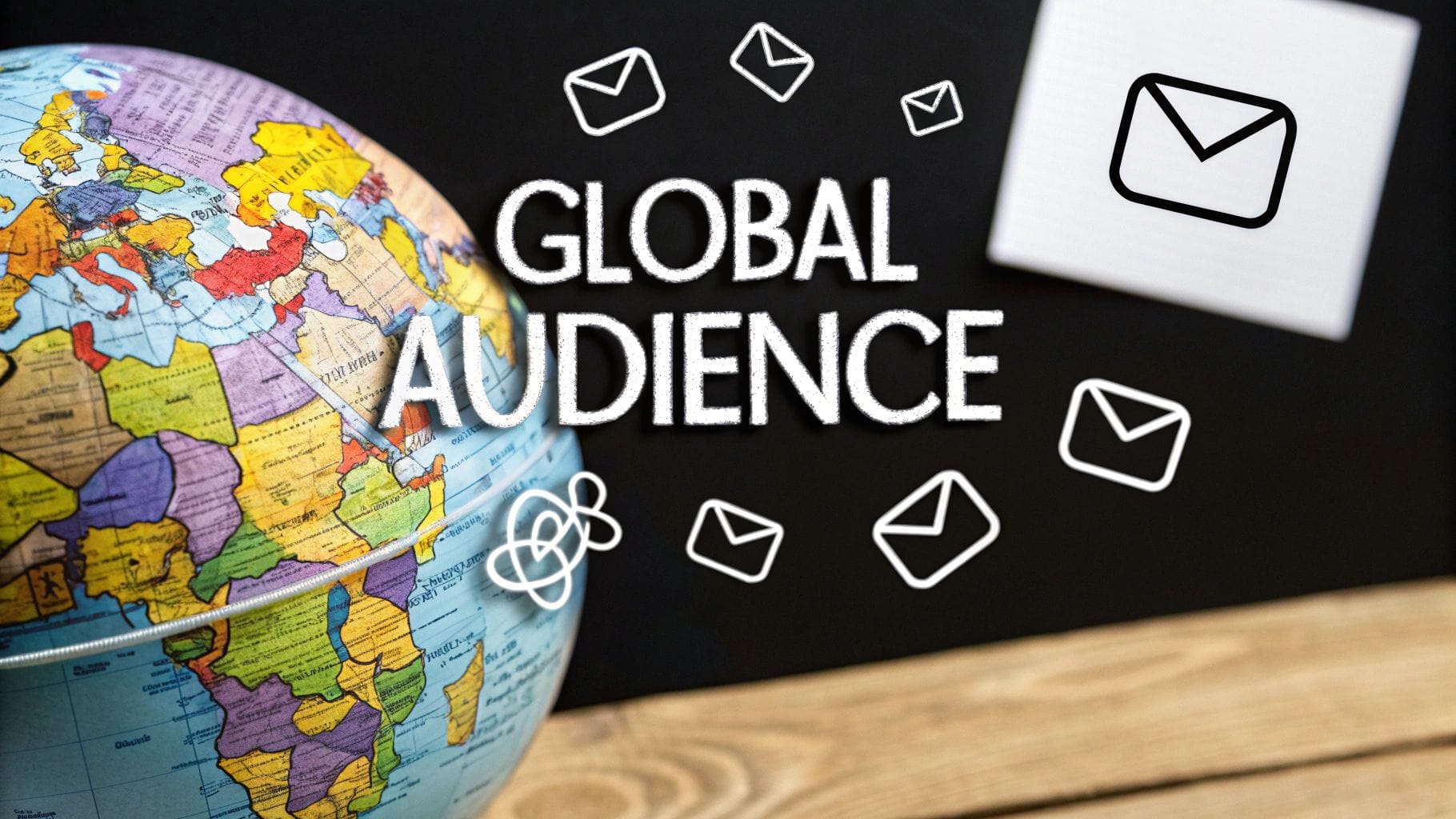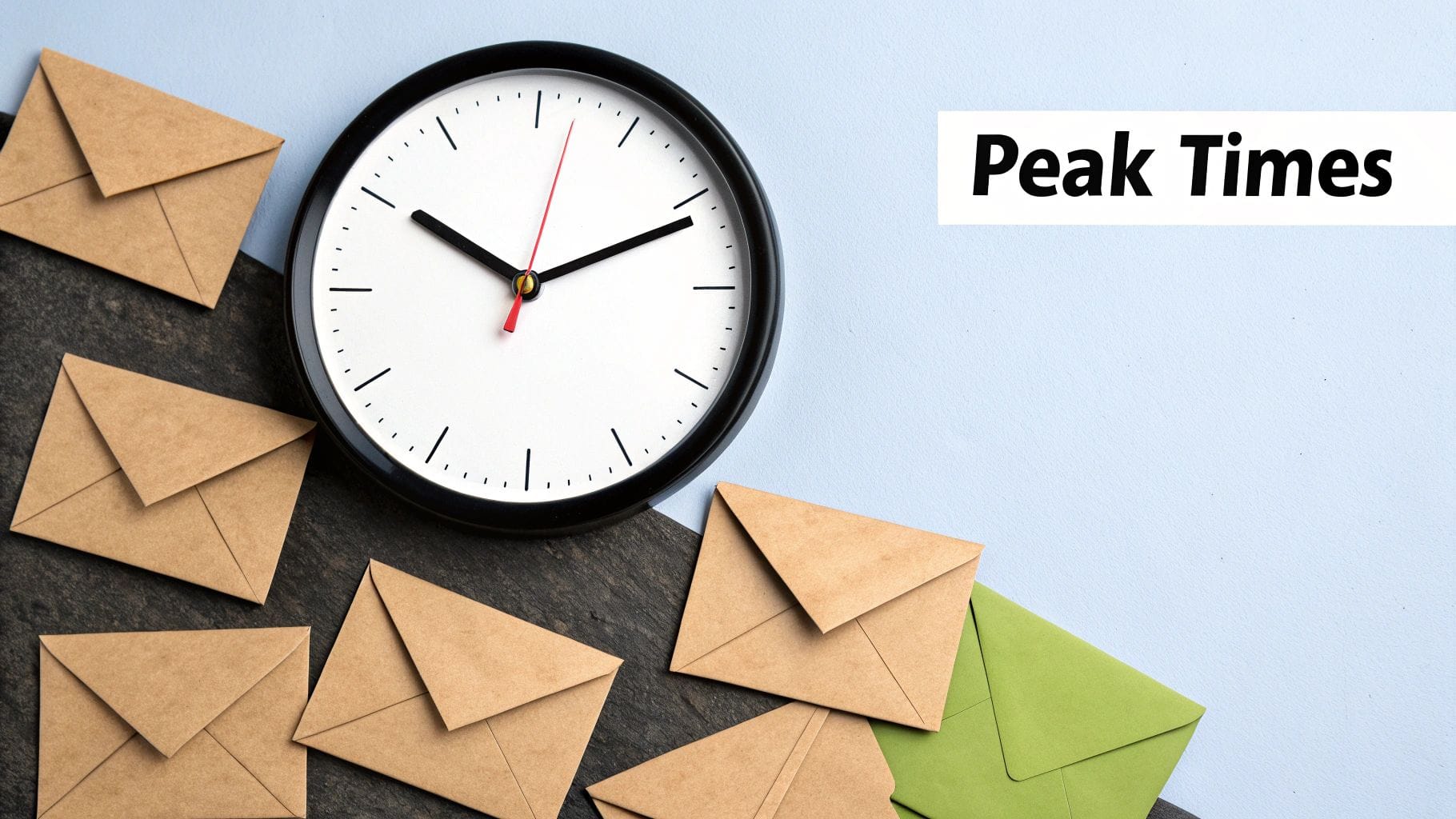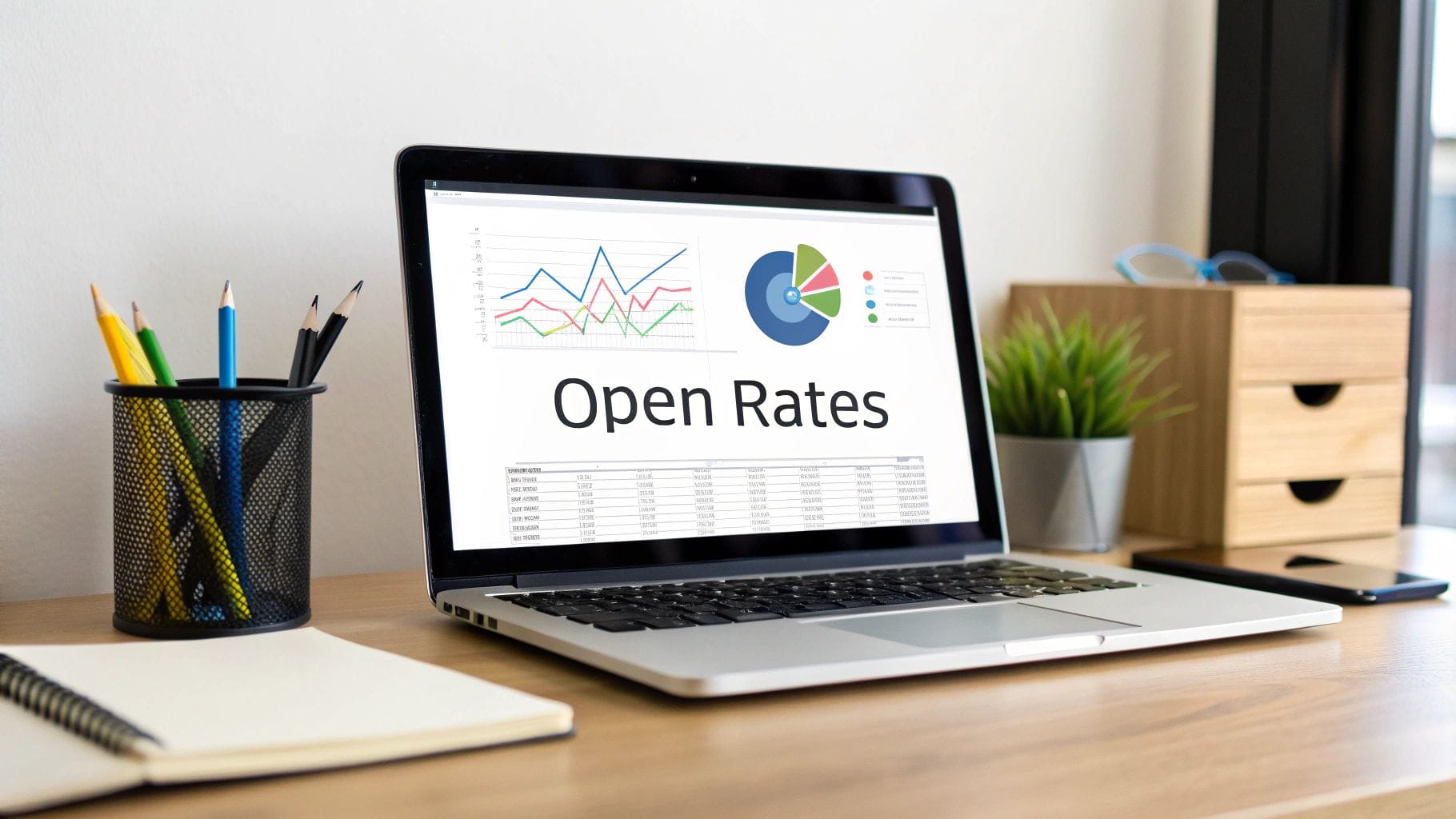Best Time to Send Email Newsletter: A Strategic Guide for Maximum Engagement
Best Time to Send Email Newsletter: A Strategic Guide for Maximum Engagement
Mastering the Morning Engagement Window
The 9-11 AM timeframe stands out as the best window to send email newsletters. The logic behind this is simple yet powerful - it aligns perfectly with how most people structure their workday. Picture a typical morning: after settling in and handling urgent tasks, many professionals naturally turn to their inbox to catch up. This late morning period offers the perfect opportunity to get your message in front of an engaged audience. Smart marketers recognize that while some subscribers check email earlier, this mid-morning sweet spot reaches the widest segment of readers when they're most receptive.
Avoiding the Early Morning Rush
You might be tempted to send your newsletter right at 6-8 AM to be first in the inbox. However, this early window is often the most chaotic part of subscribers' days. Your carefully crafted content risks getting buried under a flood of other messages during this busy period. It's similar to trying to have an important conversation in a noisy restaurant - your message gets lost in the commotion. By waiting until 9 AM or later, you position your newsletter to arrive when readers have the mental space to actually engage with what you're sharing.
Why Morning Emails Work
The effectiveness of morning emails comes down to human behavior and habit. Research from Mailjet reveals that over half of users make checking email one of their first activities of the day. This creates a perfect chance to connect with readers while their minds are fresh and open to new information. Think about delivering valuable content right as your subscribers are planning their day - you become part of their morning routine and can influence their decisions. A well-timed morning newsletter featuring a special offer, for instance, plants a seed that can lead to action later that day.
Testing Your Morning Send Time
While 9-11 AM is a strong starting point, the ideal sending time depends on your specific audience. The only way to find your optimal window is through careful testing and analysis. Perhaps 10 AM consistently outperforms 9 AM for your readers, or 11 AM might prove to be your magic hour. Run simple A/B tests by sending to different segments at different times and tracking the results. Compare open rates and click-throughs between 9 AM one week and 10 AM the next. For more insights, check out The Importance of Newsletters. Remember - the best time to send is whenever your unique audience is most likely to engage, and testing is how you discover that timing sweet spot.
Leveraging the Lunch Break Sweet Spot
The midday break from 12-2 PM provides an excellent window to connect with newsletter subscribers in a more relaxed mindset. As people step away from focused work tasks, they often use this time to catch up on personal emails and lighter content, making it an ideal opportunity for your newsletter to capture their attention.
B2B vs. B2C: Making the Most of Midday Timing
The lunch hour looks quite different depending on your audience. For B2B readers, this slot works well to reach decision-makers who use their break to scan industry updates and news. A newsletter delivering concise market analysis or key trends can resonate with executives looking for quick, valuable insights during their downtime.
For B2C audiences, lunchtime offers a mental break from work demands - perfect timing for lighter, entertaining content and special offers. When someone is scrolling through emails while eating lunch, an engaging subject line and visuals can significantly boost your open rates. You might be interested in: How to improve email open rates by industry in 2023.
Content Strategies for the Lunch Break
Your lunchtime content should match your readers' mindset during this brief window. Quick, digestible pieces work best since people are less likely to dive into lengthy articles. Think of offering bite-sized content - bullet points, brief summaries, and eye-catching graphics help deliver value efficiently during this shorter attention span.
Standing Out in a Crowded Inbox
Since many senders target the lunch hour, your newsletter needs compelling elements to get noticed. An attention-grabbing subject line is essential - it's your first impression and often determines whether your email gets opened or ignored. Additionally, personalizing content based on subscriber preferences and behaviors can boost engagement significantly. Using dynamic content that reflects individual interests creates a more relevant experience that helps your message connect amid the midday inbox traffic.
Capitalizing on Afternoon Attention Peaks
The afternoon hours present an excellent opportunity to connect with your newsletter subscribers. While many assume productivity declines later in the day, research shows that email engagement actually peaks around 3 PM. This makes the afternoon an ideal time to send your newsletter and reach readers when they're most receptive.
Understanding the 3 PM Engagement Sweet Spot
The afternoon surge in email engagement stems from natural human behavior patterns. After lunch, many people experience decreased energy and focus, making email checking a welcome mental break from demanding tasks. According to research by SuperOffice, 3 PM consistently shows some of the highest email open rates of the day. By timing your newsletter delivery for this period, you can tap into this natural rhythm and increase the chances of your content being read.
Crafting Content for the Afternoon Lull
To make the most of this afternoon attention window, adapt your content to match readers' mindset. For instance, keep pieces brief and easily scannable since focus may be reduced. Quick tips, industry news summaries, and eye-catching visuals work well during this time. Adding a dash of humor or lighthearted content can also help your newsletter provide a pleasant break in the workday. You might be interested in: How to improve email engagement.
Structuring Your Campaigns for Maximum Impact
The way you structure your afternoon email campaigns matters just as much as the timing. Write subject lines that immediately grab attention in busy inboxes. Make sure your design looks great on mobile since many people check email on phones during breaks. A clean, mobile-optimized layout ensures your message comes through clearly no matter how subscribers access it.
Testing and Refining Your Afternoon Strategy
While 3 PM is a good starting point, finding the perfect sending time depends on your unique audience. Test different afternoon slots, like 2 PM versus 4 PM, and track which gets better open and click rates for your subscribers. This data-driven approach helps you steadily improve your timing. The key is to keep measuring and adjusting until you find what works best for engaging your specific readers. After all, the optimal sending time is whenever your audience is most likely to open and read your content.
Building a Data-Driven Testing Framework

The key to finding the best email newsletter sending times lies in understanding your unique audience through systematic testing. While industry benchmarks provide a starting point, only data-driven testing will reveal the optimal timing for your specific subscribers. This requires moving beyond assumptions to let actual results guide your decisions.
Defining Your Key Metrics
Start by clearly outlining how you'll measure success. Open rates show how many subscribers see your emails, but click-through rates (CTRs) indicate how engaging your content really is. For example, high opens but low clicks often mean you have great subject lines but content that needs improvement. The most valuable metric is conversions - whether subscribers take desired actions like signing up or making purchases after reading your newsletter.
Structuring Your A/B Tests
A/B testing compares different versions of your newsletter with distinct subscriber groups. A basic test might send the same content at 10 AM versus 11 AM to see which time performs better, keeping all other elements constant. Beyond timing, you can test subject lines, content variations, and call-to-action designs to improve multiple aspects of your newsletters.
Interpreting the Results and Iterating
After running tests, look for clear patterns in your data. If sending at 11 AM consistently gets better engagement than 10 AM, you have solid evidence for adjusting your schedule. Keep testing and refining - after confirming 11 AM works well, try comparing 11:15 AM and 11:30 AM to pinpoint the ideal time even more precisely.
Combining Data With Qualitative Insights
Numbers tell part of the story, but direct subscriber feedback adds crucial context. Include quick surveys in your newsletters asking about content preferences and ideal reading times. This feedback paired with your testing data creates a complete picture of what works for your audience. For instance, if data shows afternoon engagement spikes but surveys indicate morning preference, try shorter, easily digestible content for afternoon sends.
Building a Continuous Optimization Loop
The perfect sending time isn't fixed - it changes as your audience grows and habits shift. A data-driven testing framework lets you keep optimizing. Regular metric reviews, A/B tests, and subscriber feedback help you continuously fine-tune your timing to maintain strong engagement. This proactive approach ensures your newsletters stay relevant and effective as your audience evolves.
Crafting Your Strategic Send Time Calendar

Getting your email timing right makes a big difference in how well your newsletters perform. Setting up a thoughtful send time calendar helps get your messages in front of subscribers when they're most likely to engage. Rather than picking just one perfect time, you'll want to create a flexible schedule customized to your different audience groups. Think of it as a map to guide your email outreach for better engagement and results. For more tips, check out our guide to the best time to send newsletters.
Building Your Baseline Schedule
Start with the basics - most businesses do well sending emails between 9-11 AM. Use this window as your starting point and test how your subscribers respond. Pay attention to open rates and engagement during different times. Remember, this schedule is just the foundation - you'll refine it based on what works best for your audience.
Segmenting Your Audience for Targeted Sends
Here's where strategy comes into play. Break down your email list into groups based on factors that matter, like location, past purchases, and how often people open your emails. For example, you might find your most engaged subscribers love getting a Sunday evening preview of upcoming content, while less active readers respond better to mid-week reminders. By sending at optimal times for each group, you'll boost your overall results.
Incorporating Seasonal and Event-Based Adjustments
Your send time calendar should evolve with your business cycles. During holiday seasons, you may need to shift your timing to catch people when they're most likely to read and respond. The same goes for special promotions or time-sensitive announcements - sometimes the usual schedule needs tweaking. Stay flexible to match real-world patterns and events.
Utilizing Calendar Management Tools
Managing multiple send times across different subscriber groups takes organization. Many email platforms include features to help schedule sends, set up automated campaigns, and test different timing options. These tools make it easier to stay consistent while experimenting to find what works best.
Example Send Time Calendar Structure
Segment | Day | Time | Content Type | Goal |
|---|---|---|---|---|
All Subscribers | Tuesday | 10:00 AM | Weekly Newsletter | General Updates and Promotions |
Highly Engaged Subscribers | Sunday | 6:00 PM | Content Preview | Drive Early Engagement |
Inactive Subscribers | Thursday | 2:00 PM | Re-Engagement Offer | Reactivate Dormant Users |
New Subscribers | Immediately after signup | Welcome Series | Onboarding and Product Introduction | Build Initial Relationship |
This table shows how to structure your timing for different groups and goals. By matching your schedule to specific segments and what you want to achieve, you'll get better results from your newsletter strategy. This approach lets you keep improving based on what you learn about your audience's preferences.
Implementing Advanced Audience Segmentation

Finding the perfect time to send email newsletters requires more than just picking a random time slot. You need to understand your audience's unique behaviors and preferences to develop an effective sending strategy. This is where advanced segmentation comes in - by breaking down your subscriber base into distinct groups, you can deliver content at the optimal time for each segment.
Analyzing Engagement Patterns Across Different Segments
Consider how different subscriber groups interact with your emails. Working professionals tend to check emails during lunch breaks or commutes, while stay-at-home parents often engage more during school hours or early evenings. By examining past engagement metrics like open and click rates, you can identify these natural patterns. This means one sending time won't work equally well for everyone. For more insights, check out our guide to top email marketing and email segmentation strategies.
Implementing Timezone-Aware Sending Strategies
For businesses with subscribers across different regions, timing is especially critical. An email sent at 10 AM in New York might reach Tokyo subscribers at midnight - hardly ideal for engagement. By segmenting based on location and scheduling sends according to local time zones, you ensure your messages arrive when subscribers are most likely to see them. This attention to timing shows subscribers you value their experience and understand their daily routines.
Measuring the Impact of Personalized Timing Approaches
Once you implement segmented sending times, consistent monitoring is essential. Track key metrics like opens, clicks and conversions for each segment to evaluate what's working. The data often reveals interesting patterns - some groups might engage more on weekends while others prefer weekday communications. Use these insights to keep refining your approach and improving results over time.
Examples of Successful Segmentation Strategies
Segment | Characteristics | Best Send Time | Content Focus |
|---|---|---|---|
New Subscribers | Recently joined your list | Immediately after signup, then a welcome series over the next few days | Welcome message, product introduction, special offers |
Loyal Customers | High purchase frequency and engagement | Exclusive previews, early access to sales, personalized recommendations | Reward loyalty, drive repeat purchases |
Inactive Subscribers | Haven't engaged in a while | Re-engagement campaigns, special offers, feedback requests | Reactivate interest, gather feedback |
By taking a strategic approach to segmentation and timing, you can build stronger connections with subscribers. When you deliver relevant content at the right moment, you increase the chances of converting casual readers into loyal customers.
Ready to improve your email marketing results? Inagiffy handles everything from technical setup to content creation, with guaranteed readership and revenue growth. Visit inagiffy.news today to learn how we can help grow your audience while you focus on your core business.
Comments
Your comment has been submitted successfully!